Today we will be checking out an exciting new release by Orchestral Tools: Andea. Made in collaboration with multi-instrumentalist Richard Harvey, who contributed to films like The Lion King, Interstellar, and Mulan among many others, this library offers dozens of interesting instruments from Central and South America that have been featured in countless movies in recent years.
Orchestral Tools kindly provided us with a review copy of Andea for this review. Let’s have a look at it!
OVERVIEW
Andea features a selection of 61 rarely sampled instruments divided into three sections: plucked strings, winds, and percussion.
The plucked strings section features a ronroco, a charango, a charangolin, an 8-string ukulele, a cavaquinho, a cuatro, a tiple, a très, a guitarra, a paraguayan harp, and a guitarron.
The winds section features various flutes such as two Aztec flower flutes, two pinkullos, two tarkas, a kena, a kenacho, a Navajo flute, and two mocenos. This category also includes panpipes such as a chuli and a malta, toyos and contra toyos. Finally, we can find a selection of Peruvian, Aztec, tenor, and bass ocarinas.
The percussion section naturally includes drums such as a bongo, two snares, four types of congas and bombos, and a cajita coplera. Shakers are also present, in the form of chajchas, maracas, a shekere, and five other distinct types of shakers. Wooden percussion is covered through claves, two cajons and three different types of guiros, along with a couple of log drums. Finally, a berimbau, a kultrun, a cajita ritmica and an angara round up the percussion selection.
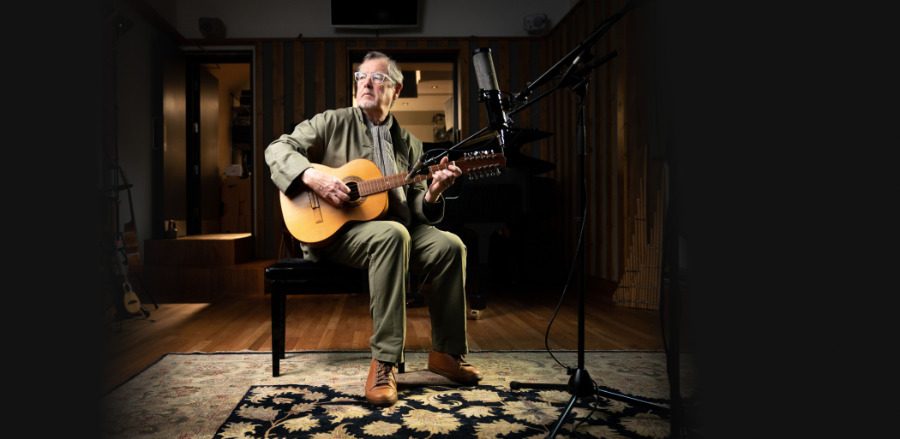
All instruments have been recorded in a small studio space, using four microphone positions. The library occupies 24 GB of hard drive space once installed.
Here is an overview of the articulations included in the plucked string instruments:
- Sustains
- Sustains chromatic
- Portatos long and short
- Staccatos
- Bends
- Trills
- Chords
- Effects
- Dead notes (for some instruments)
- Glissandos, slides and falls (for some instruments)
These are the patches included for the winds section:
- Sustains (along with legato)
- Sustains chromatic, bends and ornaments
- Staccatos and short staccatos
- Portatos for some of the ocarinas
Finally, here is an overview of the percussion section:
- Single hits
- Dynamics (for most instruments)
- Rolls (for most instruments)
RICHARD HARVEY
British multi-instrumentalist Richard Harvey is a respected composer, orchestrator, conductor, and performer.
His interest in world- and traditional music enticed him to acquire unique instruments from all around the globe: he now possesses more than 700 of them, in what is an invaluable collection.
His film and TV music career started with his collaboration with Maurice Jarre in the 1970s. Over the years he also has collaborated with great artists such as Hans Zimmer and Nick Glennie-Smith. With them, he worked on numerous movie soundtracks, including Mulan, Interstellar, Harry Potter and the Prisoner of Azkaban, The Da Vinci Code, The Little Prince, and many others.
SINE PLAYER
Andea is a sample library exclusively designed for Orchestral Tools’ SINE player. As with previous SINE releases, this gives Orchestral Tools the ability to present a customized working environment and to offer single instruments for purchase separately.
The SINE player offers the same control features for Andea as it does with previous SINE libraries, including the possibility to add legato to any articulation, the control over round robins, mic merging, and ADSR envelope settings. All these controls will feel very familiar to composers who have used SINE in past releases.
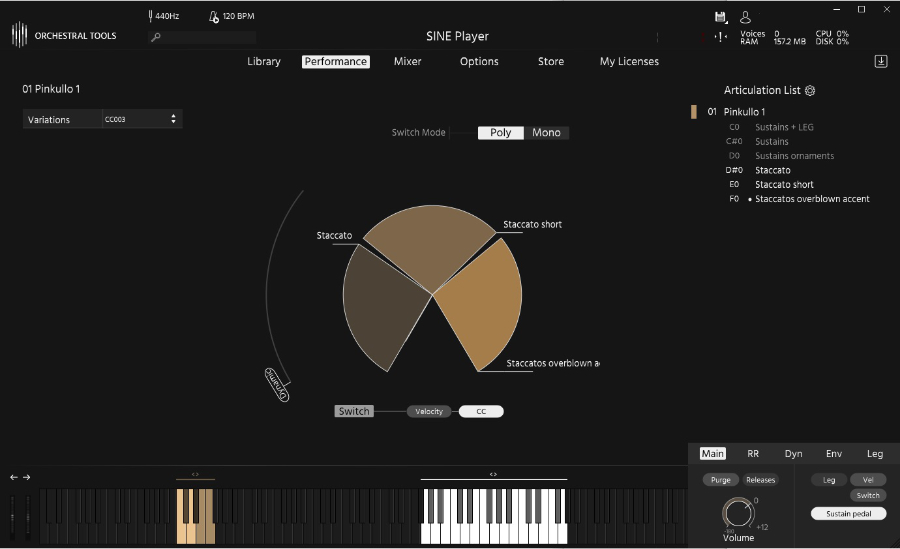
The installation itself is straightforward and consists of activating the purchase, navigating to the ‘My Licenses’ tab in SINE, and either downloading the complete library or just desired sections and microphone positions à la carte. This leaves the users in control of how much hard drive space they want to dedicate to the library.
THE SOUND OF ANDEA
Needless to say, with 61 different instruments, Andea covers a huge selection of musical colors. Let’s take a deeper look at them.
The plucked instruments are all deeply sampled and cover three to four dynamic layers. They have four round robins for normal sustains and up to eight for chromatic sustains, which allows them to sound lovely when used for strumming patterns.
Out of these instruments, our personal highlights include the ronroco and charango which sound particularly nice and resonant. They are able to give sort of a shimmery feel to a musical arrangement. The tiple is also very interesting: at higher dynamics, it is able to cut through a mix easily, however, cinematic music composers might get more use out of its gentle, lower dynamics.
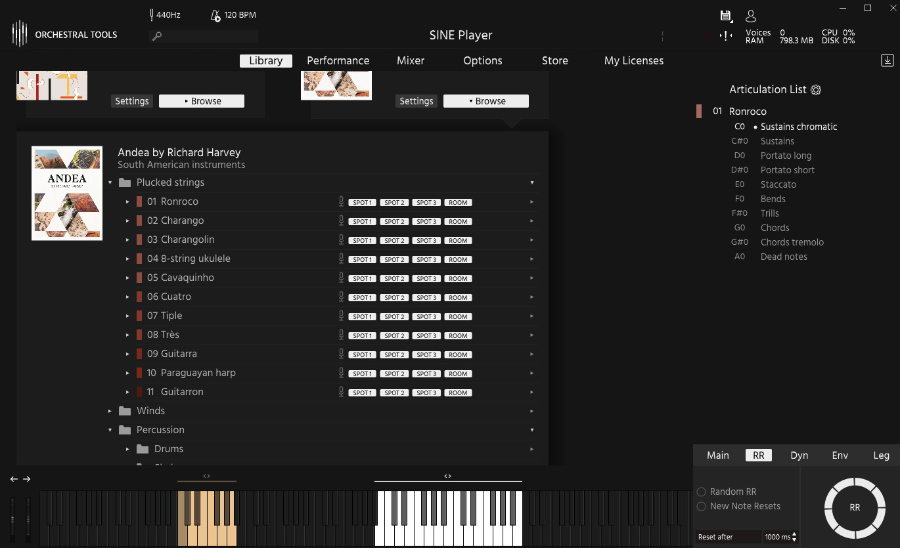
The winds selection is also very fascinating. What we get here is a set of immediately inspiring instruments, that are perfectly suited for creating atmospheres and intriguing textures. With more than 20 sampled instruments, it would be easy to think that there is quite a tonal overlap. However, the lineup offers very distinct tones, some being very bright, others being more hollow or “breathy”.
The instruments have also been sampled with different levels of vibrato (usually two to four), according to how they can be played in real life. Moreover, they are also particularly apt at playing melody lines thanks to their great sampled legato transitions. Our highlights here include the kena, the tarka, and the Peruvian ocarina, which all have their own distinct tonalities.
As of note though, Orchestral Tools chose to sample most of these instruments diatonically for more authenticity. In practice, this just means that notes which wouldn’t be achievable by the instrument in real life are not available in SINE either.
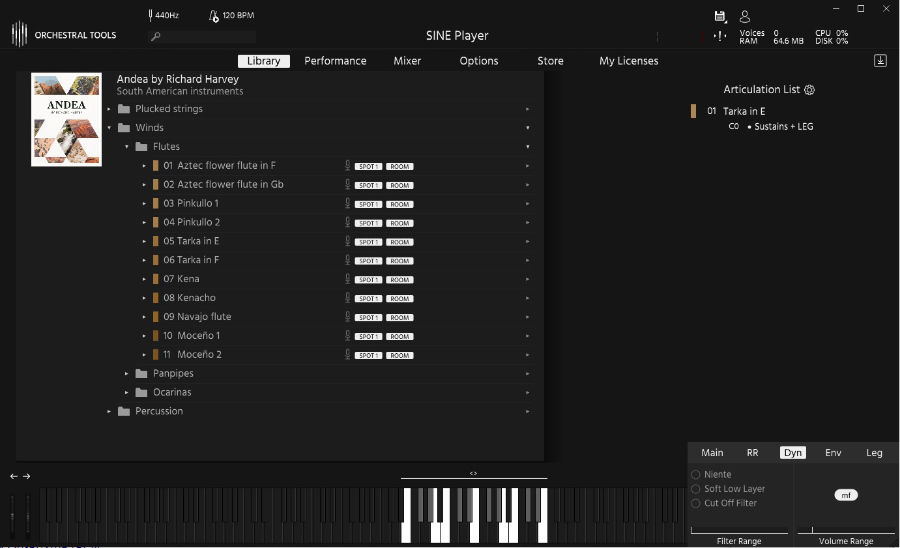
The percussion section is very varied in nature and offers a nice selection of different percussive elements. I was pleasantly surprised that the lineup covers the whole sonic spectrum, from thudding low bombos, to bright shakers and claves.
Again, all sound sources have been sampled very deeply. The various instruments feature between five to ten round robins each. The percussion section also contains a special category, comprising more unique instruments. Out of these, the Brazilian berimbau has a lovely dual role, being both a string instrument and a percussive one. The kultrun also has a nice “dry thudding” quality to it, which would make it an interesting candidate for layering with other percussion instruments.
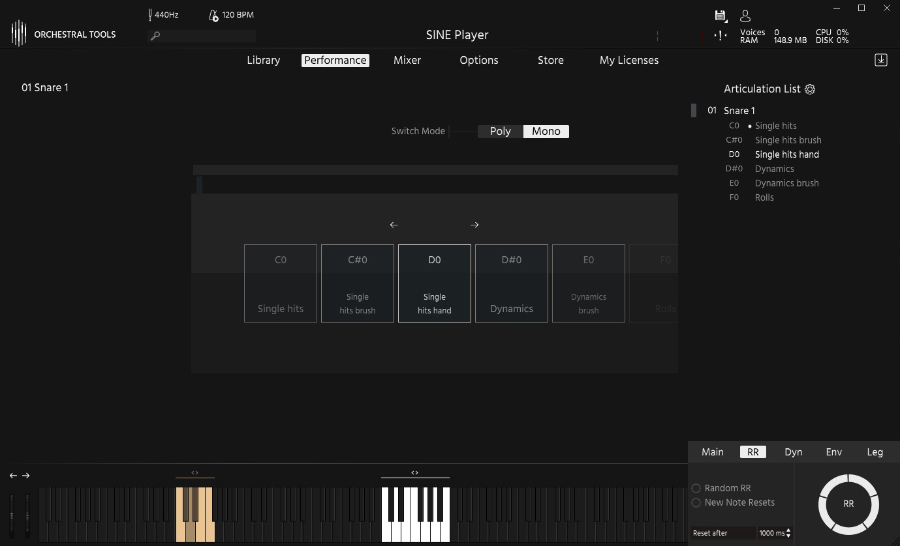
All instruments in Andea have been captured in a rather small recording space, the SML Studio Surrey, London. In total, three spots and one room microphone positions are provided. The spot mic positions all sound very dry and upfront, but I felt like they differ by what they emphasize: Spot 1 for example seems particularly apt at capturing the close high end of the instruments, while the other spot mics present a more subdued response on that front.
The room mic is more akin to an audience position, and therefore, a bit more reverberant but not overly so. This is mostly due to the small size of the room the instruments were captured in. Luckily all of Andea’s instruments take external reverb very well, giving their beautiful resonances time to shine. This is particularly useful in cinematic or orchestral contexts.
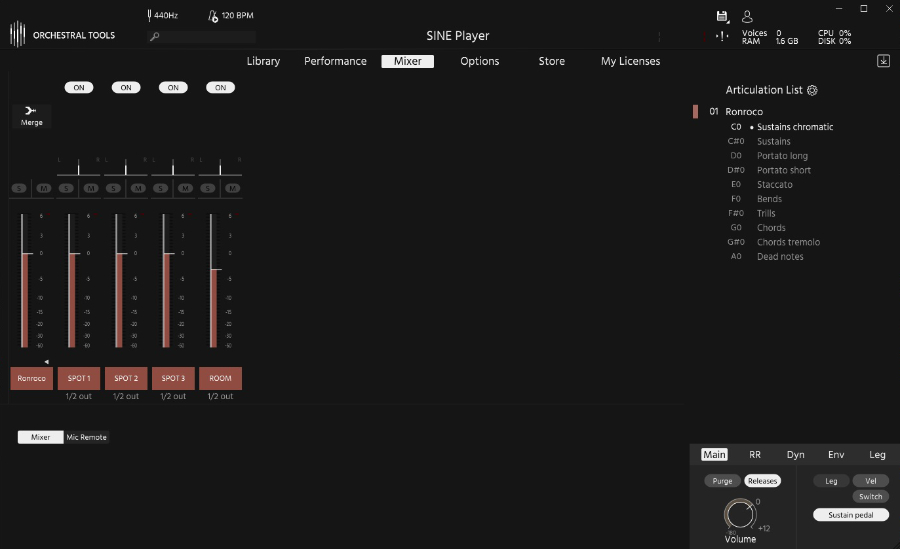
CONCLUSION
It is always nice to see developers go in a different direction from orchestral sounds, by also sampling lesser-known instruments from the western world. And it is even better when this idea is greatly executed, as it is in this release.
Andea is a great choice for composers wanting to add inspiring and rarely-sampled instruments to their scoring templates. The library is full of instruments that could give a unique and beautiful touch to any movie score or game soundtrack.
With 61 dry and upfront-sounding instruments offered, composers will have plenty of choice to precisely pick the tone they desire to use. Moreover, the sampling quality is top-notch, with good legato transitions, and a healthy number of dynamic layers and round robins offered.
Andea aims to inspire. And in this regard, the library totally delivers on what it sets to achieve.
Pros
- Vast selection of rarely sampled instruments
- Great sampling throughout (legato, round robins, dynamic layers)
- Good choice of articulations
- Small studio space emphasizes the organic quality of the recordings
Cons
- Needs a third-party reverb to fully shine: on that front, a Teldex IR within SINE would have been a welcome addition
RECOMMENDED: 9/10
Andea by Richard Harvey is available through Orchestral Tools’ online store for €399. Single instruments from the collection can be purchased individually, starting from €7 per instrument.
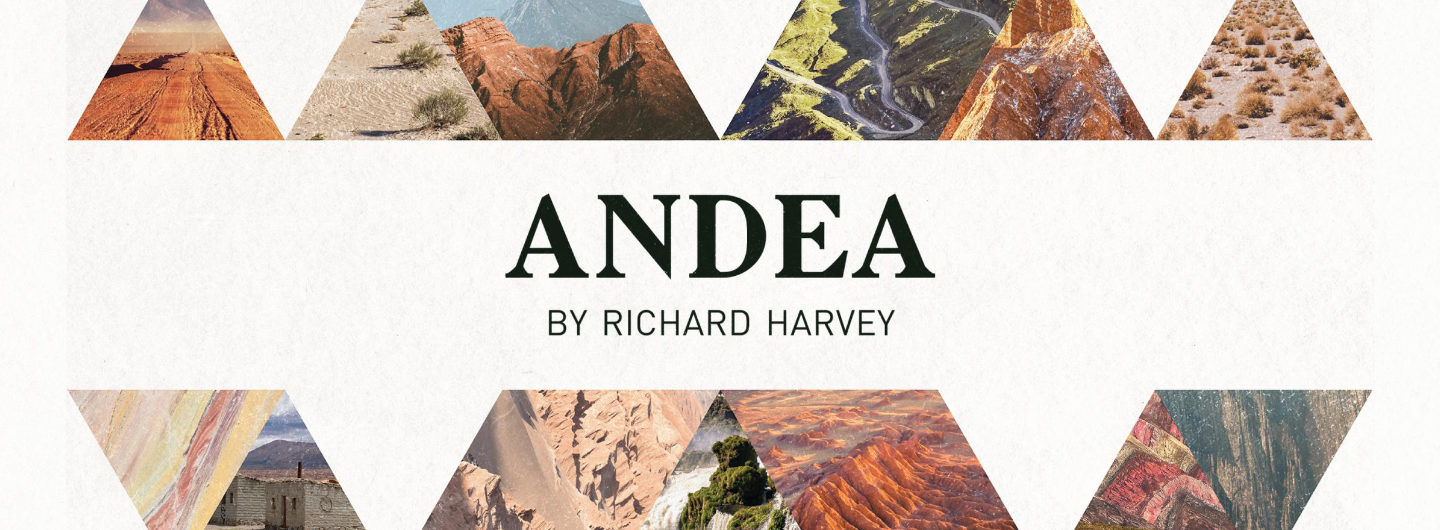

0 comments on “Orchestral Tools – Andea (Review)”